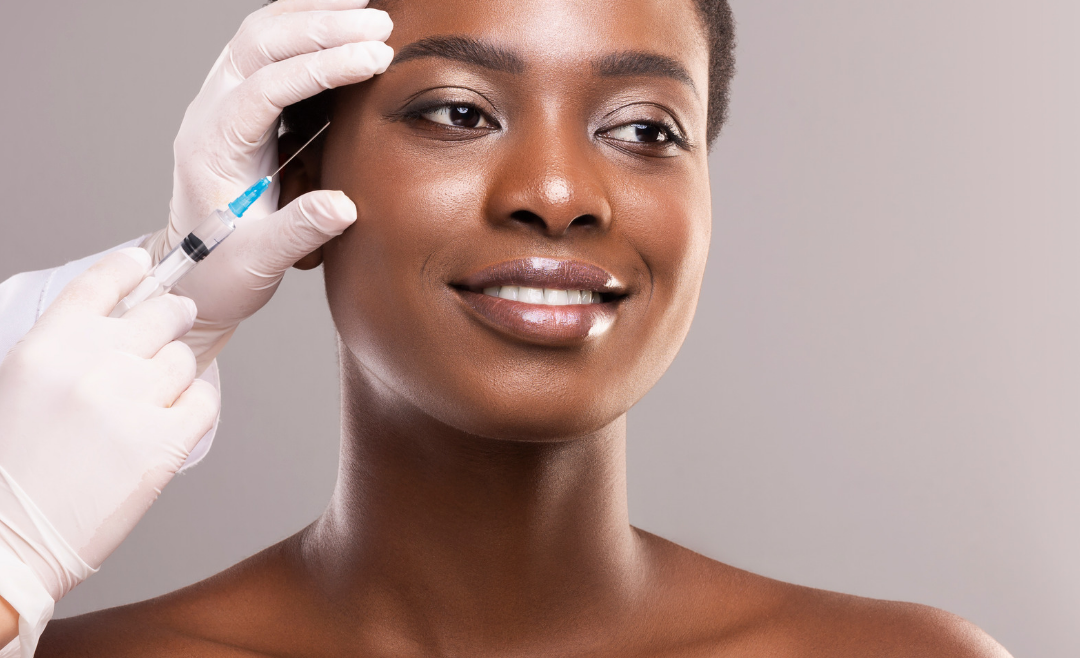 February is Black History month; celebrating the African diaspora as well as the achievement of spectacular individuals of African origin have made beyond and in spite of the collective experiences of oppression and resistance.
As diverse ethnicities and cultures globalize from a common background of origin, our modern and evolving world has the privilege of witnessing a beautiful blending of cultures, practices, and perspectives. We also get to bear witness to the expansion of genetic diversity and physical expression of mixed backgrounds.
This is where our medical perspective and purpose for writing this post comes in:
When it comes to the skin, it’s never one size fits all.
When it comes to skin of color and individuals with richer complexions (not limited to black skin), even more special considerations come into play.
Let’s take a look at a few clinical and cosmetic conditions, where conscientious Board Certified Dermatologists typically guide their patients with caution.
February is Black History month; celebrating the African diaspora as well as the achievement of spectacular individuals of African origin have made beyond and in spite of the collective experiences of oppression and resistance.
As diverse ethnicities and cultures globalize from a common background of origin, our modern and evolving world has the privilege of witnessing a beautiful blending of cultures, practices, and perspectives. We also get to bear witness to the expansion of genetic diversity and physical expression of mixed backgrounds.
This is where our medical perspective and purpose for writing this post comes in:
When it comes to the skin, it’s never one size fits all.
When it comes to skin of color and individuals with richer complexions (not limited to black skin), even more special considerations come into play.
Let’s take a look at a few clinical and cosmetic conditions, where conscientious Board Certified Dermatologists typically guide their patients with caution.

 February is Black History month; celebrating the African diaspora as well as the achievement of spectacular individuals of African origin have made beyond and in spite of the collective experiences of oppression and resistance.
As diverse ethnicities and cultures globalize from a common background of origin, our modern and evolving world has the privilege of witnessing a beautiful blending of cultures, practices, and perspectives. We also get to bear witness to the expansion of genetic diversity and physical expression of mixed backgrounds.
This is where our medical perspective and purpose for writing this post comes in:
When it comes to the skin, it’s never one size fits all.
When it comes to skin of color and individuals with richer complexions (not limited to black skin), even more special considerations come into play.
Let’s take a look at a few clinical and cosmetic conditions, where conscientious Board Certified Dermatologists typically guide their patients with caution.
February is Black History month; celebrating the African diaspora as well as the achievement of spectacular individuals of African origin have made beyond and in spite of the collective experiences of oppression and resistance.
As diverse ethnicities and cultures globalize from a common background of origin, our modern and evolving world has the privilege of witnessing a beautiful blending of cultures, practices, and perspectives. We also get to bear witness to the expansion of genetic diversity and physical expression of mixed backgrounds.
This is where our medical perspective and purpose for writing this post comes in:
When it comes to the skin, it’s never one size fits all.
When it comes to skin of color and individuals with richer complexions (not limited to black skin), even more special considerations come into play.
Let’s take a look at a few clinical and cosmetic conditions, where conscientious Board Certified Dermatologists typically guide their patients with caution.
